Editor’s note: Thanks to all those who made the effort to nominate this year’s “Ten People.” And thanks to the Ten, who share their insights and experience with The Journal of Healthcare Contracting readers this month. They are:
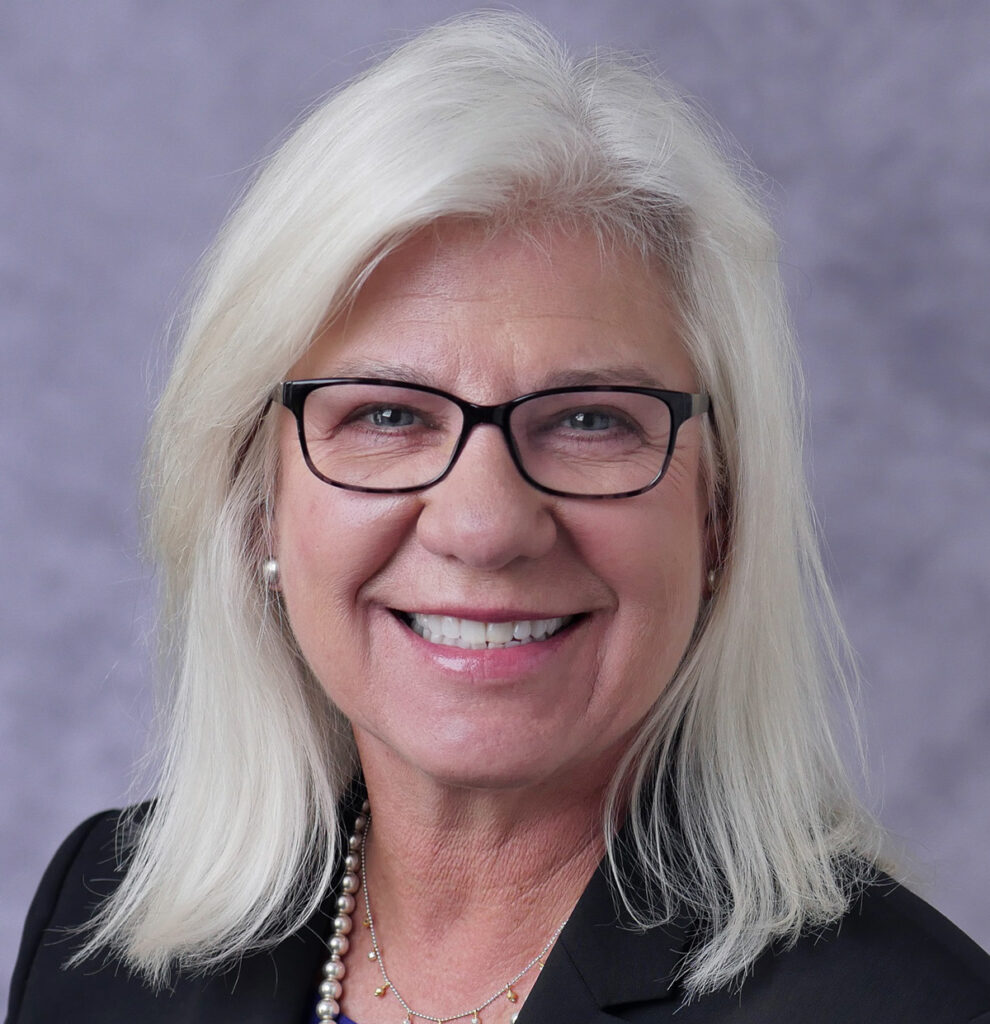

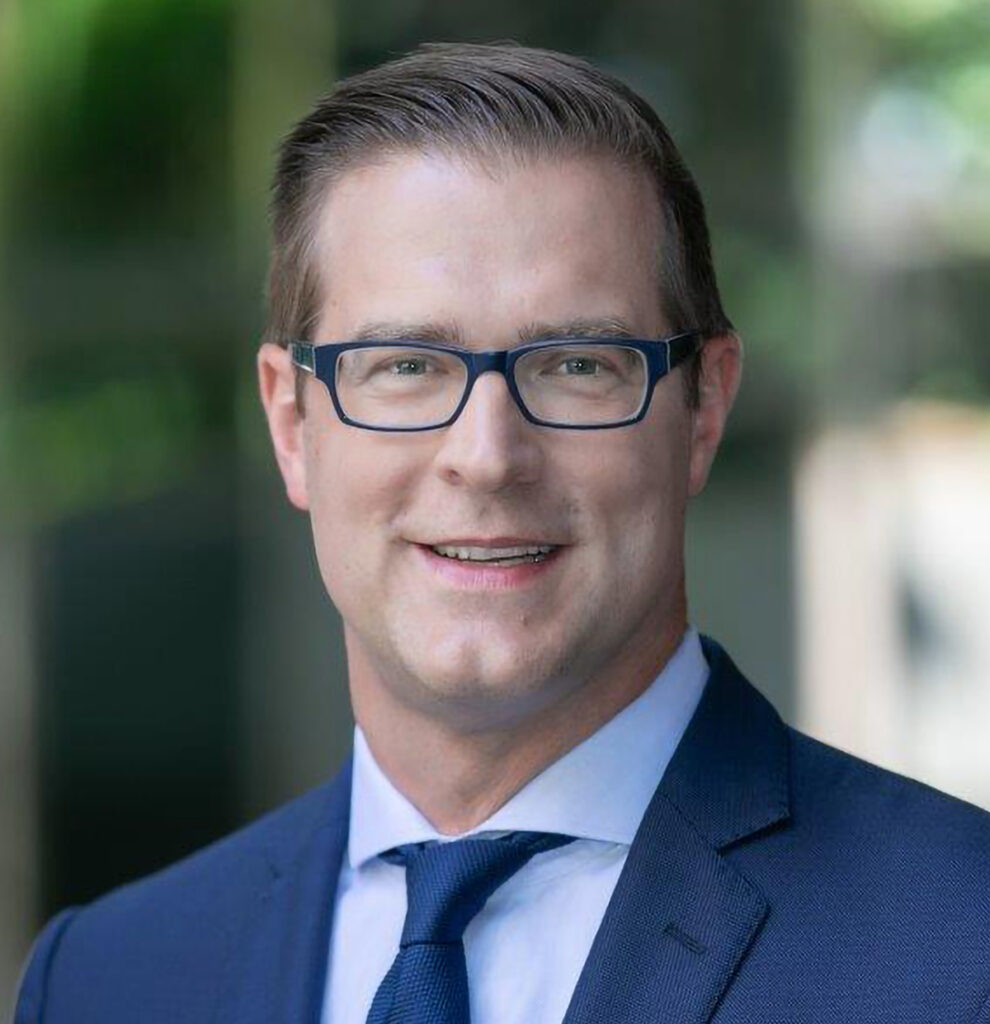
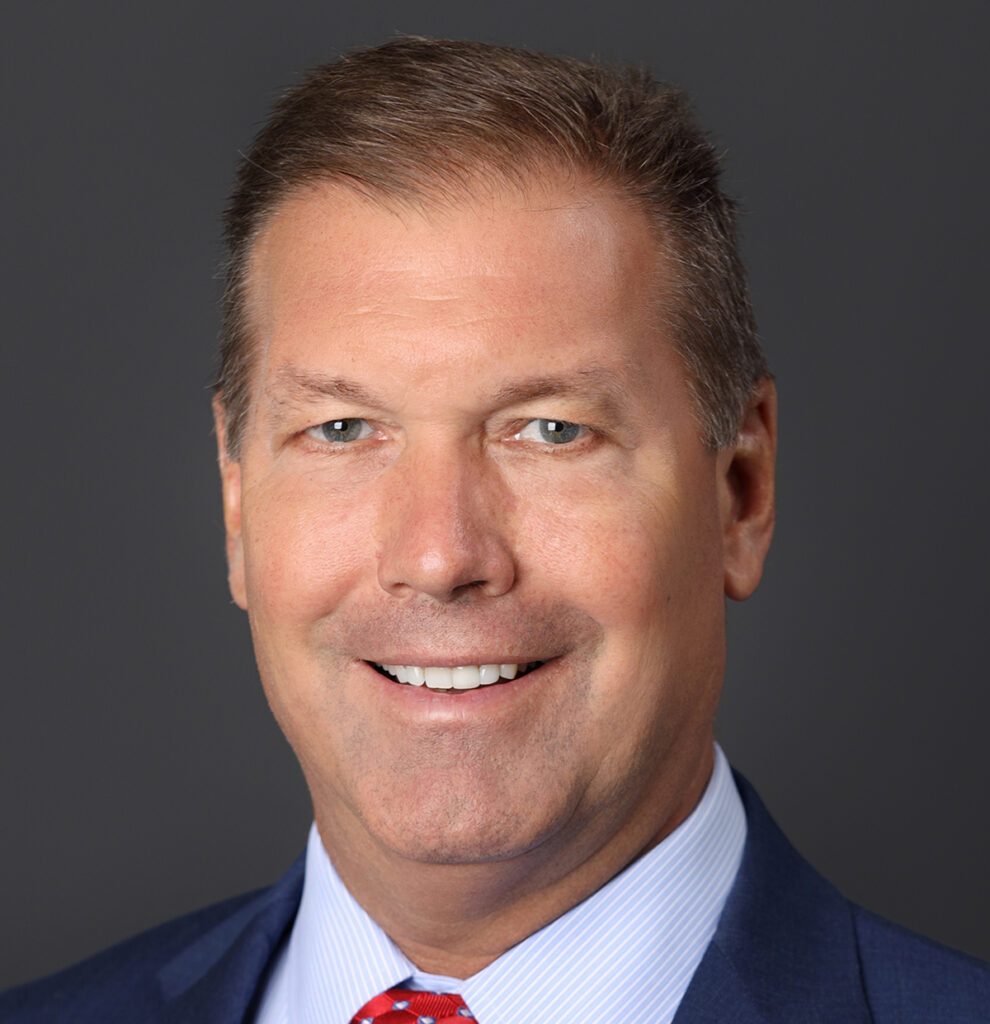
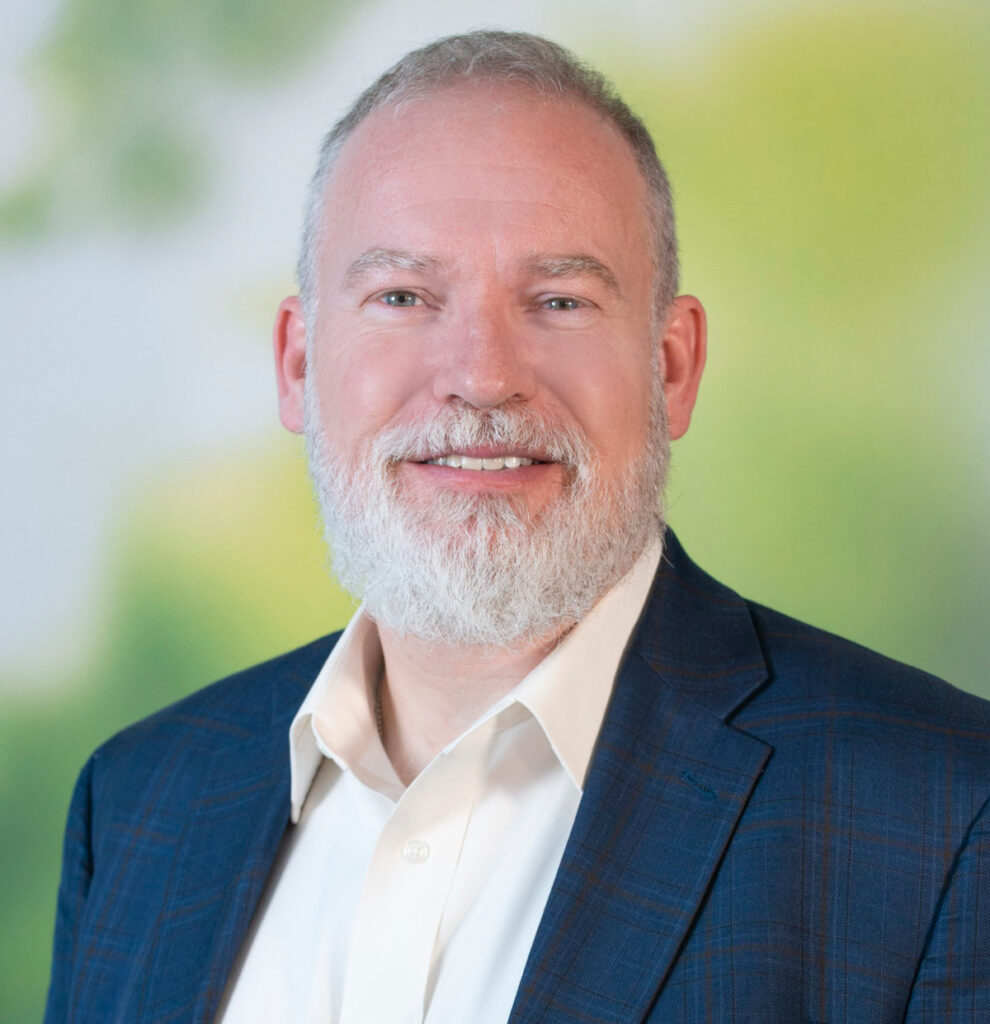

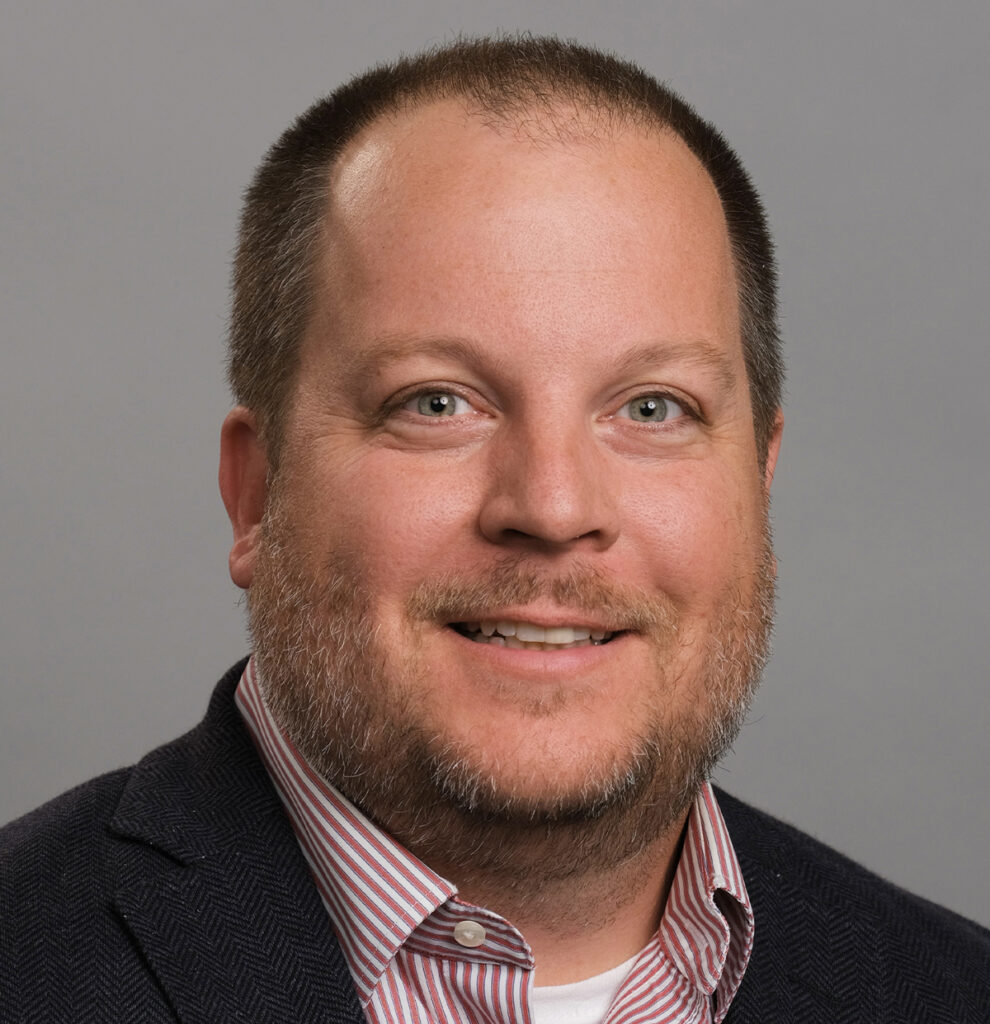
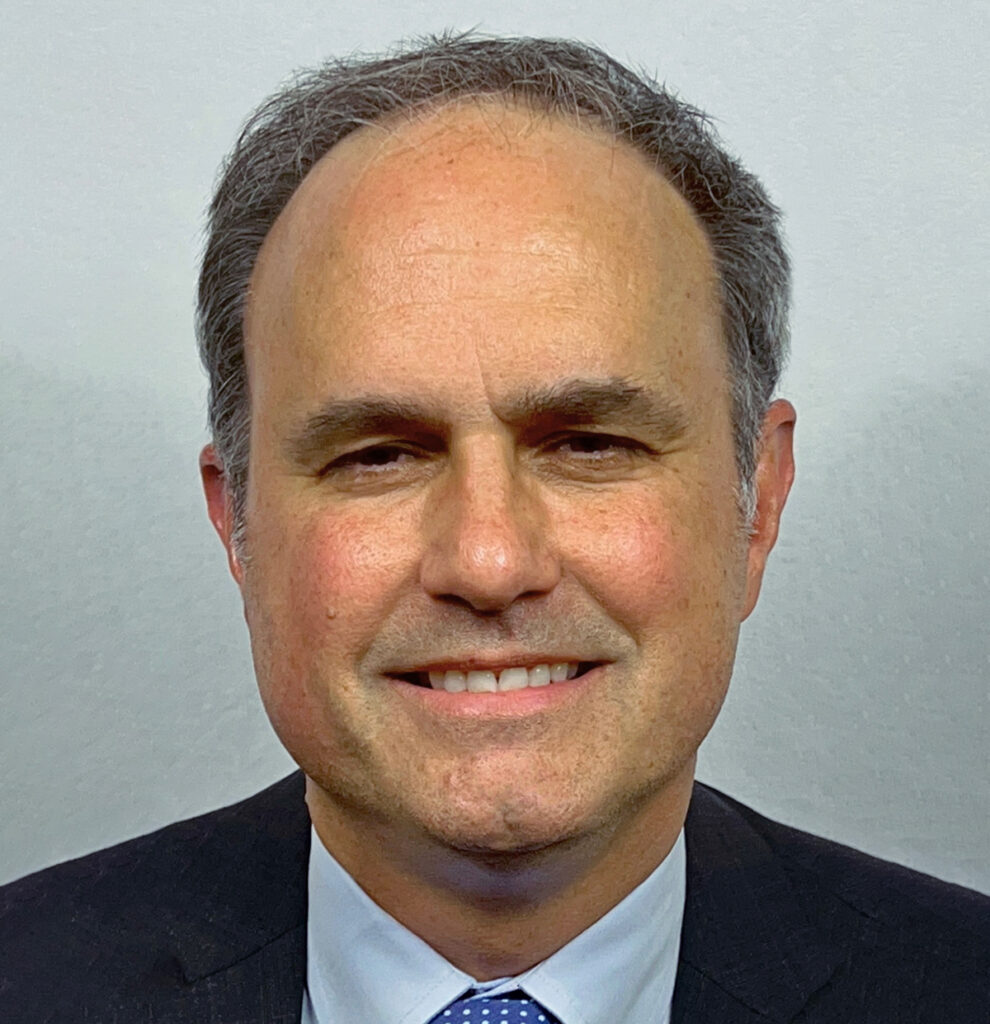
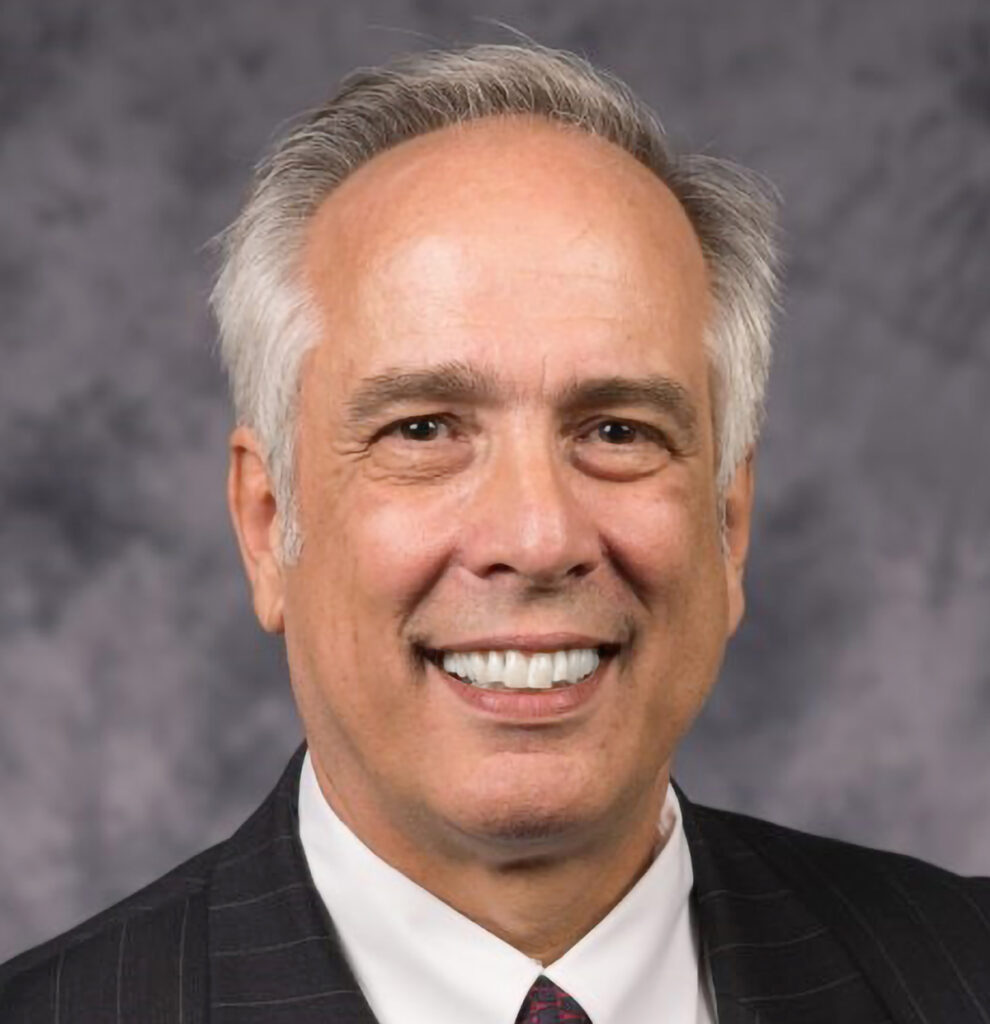
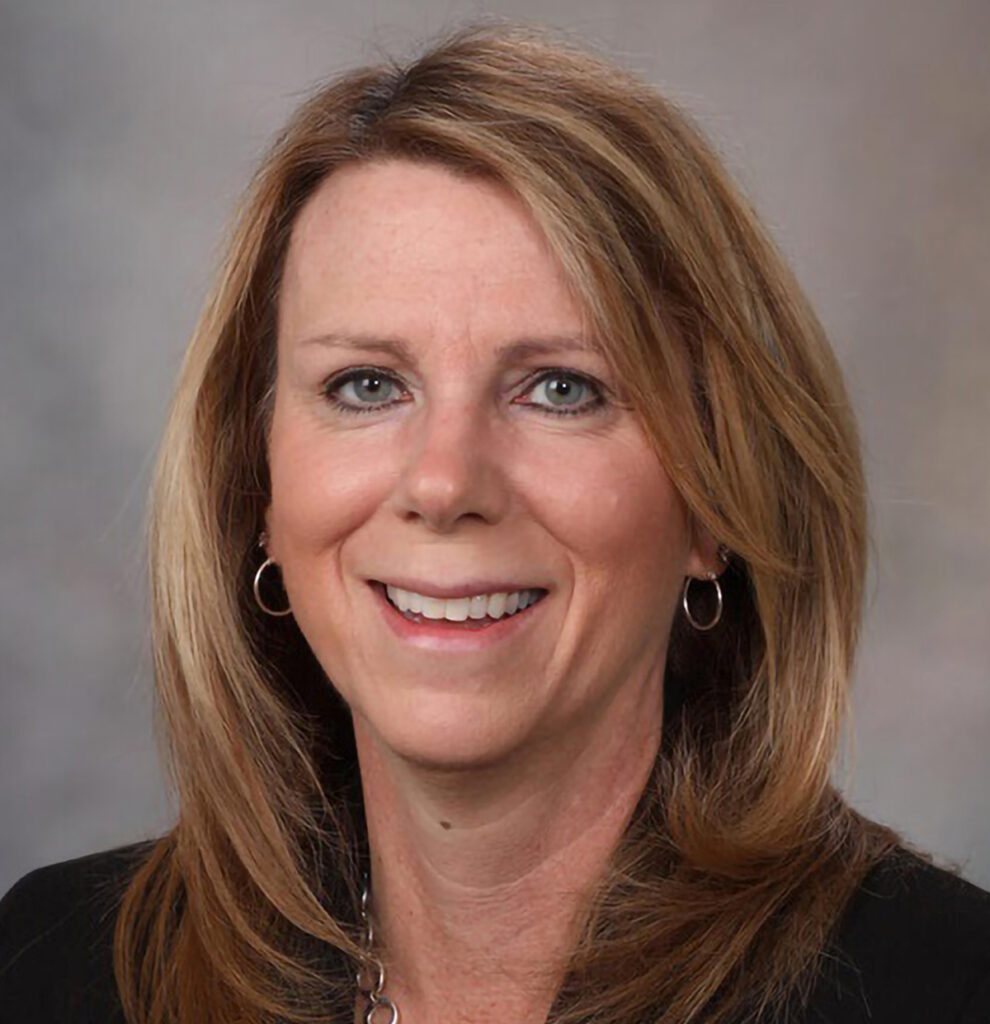
Kathryn Carpenter
VP Sourcing, Contracting, Clinical Strategy and Implementation • CommonSpirit Health

What are the most important attributes of successful supply chain teams today?
First, being able to transform processes and adapt to a rapidly changing supply chain ecosystem. Second, having support from system leadership to create a vision of “systemness.” Finally, developing data systems that can support (the first two points) at scale.
What project or initiative are you looking forward to working on?
Together with the finance department, we’re in the midst of a three-year purchased services initiative to discover and standardize many of these services nationally. We’re also setting up gatekeeping functions to review services contracts through finance and supply chain resources. It’s been highly effective because in a system our size, we weren’t making financial decisions with the awareness we should have.
What changes brought about by the pandemic are here to stay in the supply chain?
We’ve created two FTEs with the sole function to ensure resiliency and redundancy with supply chain operations. We’ve included questions in all of our supplier QBRs that include a second-tier look into their manufacturing processes and geography and labor policies. And we’ve developed a more robust relationship with CMOs, national clinical executives, quality functions and legal teams to better inform process creation related to vaccine and masking requirements.
How do you keep your team motivated despite conflicts and obstacles?
My team knows that I have an open-door policy at all times. I have weekly one-on-one meetings with my directors and monthly meetings as a group. This allows for any conflicts that arise to be dealt with in an expedient manner. Nothing is allowed to go unanswered and churn into dissatisfaction. In other words, I know my team’s business well.
We have hired people for whom success is the great motivator. I allow teams to be managed without my interference, and they can trust me to respond to any difficulties and roadblocks they may encounter. This has allowed them to knock their goals out of the park and the entire organization is aware of this success.
What qualities are lacking among today’s leaders?
The quality that I most find lacking is the willingness to wade into conflict and resolution. Most leaders are hesitant, especially in today’s healthcare environment, to stand for, or even entertain, solutions that require bold change.
So often the structure of an organization is the very thing that dictates outcomes, and there is a great reluctance to restructure. “The way we have always done it” is no longer going to be acceptable.
Keeping eyes on the wrong prize. So many leaders tend to speak in platitudes and generalities without focus. An organization’s goals should be able to be articulated in three sentences, not three words. Everyone in the organization should be able to repeat the three goals easily and without question of interpretation. Mission statements should remain that which was established at the beginning of an entity, not take the place of clear goals.
How do you continue to grow and develop as a leader?
Having grown a terrific team at CommonSpirit, I aspire to learn about supply chain in healthcare more completely. Healthcare lags behind other industries such as manufacturing and retail when it comes to best-in-class supply chain development. Healthcare leaders are just now starting to truly value and develop IT and data functions, which is way behind other industries. I’d like to continue to learn and help reshape the industry as befits the people we serve.
Shaleta Dunn
AVP, Member Diversity and Community Initiatives • Vizient, Inc.

What are the most important attributes of successful supply chain teams today?
The effects of the COVID pandemic are still being felt across the globe and require a new level of agility for supply chain leaders and their staff. Having diversity in staff can infuse the team with new ideas for strategies to help deal with disruption and improve processes.
The ability to use data is another attribute for success. Leaders must understand utilization trends and optimization opportunities as they work with the end users across the organization that they support. They must also use data to better understand their suppliers and collaborate on new strategies that create greater supply assurance.
Lastly, they must have visible support from executive leadership to ensure they are appropriately staffed and to enable forward thinking strategies that support the supply requirements for overall growth and sustainability goals.
What project or initiative are you looking forward to working on?
Over the past year, Vizient has been focusing on the various drivers that can impact health equity in our country. This work includes stakeholders across our organization whose work connects to and/or aligns to health equity strategies supporting our members and suppliers.
Being part of this work provided me the opportunity to lead the Health Equity Partnerships workstream. Supplier diversity is a driver of health equity and the HE Partnerships workstream focuses on increasing the collaboration with health systems and hospitals with the goal of making a positive economic impact in local communities.
I am excited to be able to continue to work with members who are in all phases of implementing or advancing health equity initiatives and determine how Vizient will facilitate strategic partnerships to support health equity in our membership, supply base, and community organizations that we partner with. To be able to continue the work, bridge the collaborations, and see visible results is most exciting.
What changes brought about by the pandemic are here to stay in the supply chain?
The biggest changes are a shared understanding for the benefits of greater transparency between providers and manufacturers, the importance of domestic or near shore manufacturing and warehousing of essential supplies and drugs and the importance and value of a diverse and inclusive supply chain.
At Vizient, we had put some new supply assurance programs for essential medicines and supplies in place just ahead of the pandemic. These programs required suppliers to provide information related to manufacturing locations, sources of raw materials, and insights into inventory and warehousing. They also required suppliers to increase onshore inventory to cover six months of historic demand. They have proven to be invaluable to our members and served as a catalyst for additional transparency and collaboration with members and suppliers.
These programs also sparked renewed focus on diversifying the supply chain to engage new suppliers and more local, diverse suppliers. This is creating more supply chain resiliency overall as well as local economic growth and job creation.
Who do you look up to for inspiration or mentorship?
Women in general are superheroes to me. It is always inspiring to see them soar in both their personal and professional lives. I also have been blessed to encounter several women who saw a light in me and then took the time to help it glow even brighter. I am eternally grateful for them.
I also have a great mentor in Rand Ballard, Vizient’s Chief Customer Officer. The guidance, lessons, accountability, strategy and motivation he gives supports my personal and professional development. Rand is not only an exceptional leader, with a great mind and memory, he is genuine and intentional.
Lastly, I admire and am consistently inspired by DEIB leaders and supplier diversity leaders. The people that take on this very difficult work are transforming cultures by guiding organizations to address biases. They are tasked with designing equitable practices and organizational change management while oftentimes enduring pushback, criticisms and inconsistent support and resources. Each are committed to the work of fairness and equity in the workplace for all. They are truly heroes in my book.
What are your current goals?
Under my (awesome) leader John Grande, our leadership team has been guided to utilize OKRs – Objectives and Key Results, termed by author John Doerr. I adapted this practice in my personal life, too.
High level, my personal OKR’s include:
- Health and self-care
- Financial stability in retirement
- Specific leadership attribute development
- Global travel
What three books can you recommend on leadership?
- “Measure What Matters” by John Doerr
- “Caste, The Origins of Our Discontents” by Isabel Wilkerson
- “Rethink Creativity: How to Innovate, Inspire, and Thrive at Work” by Monica Kang
Conrad Emmerich
SVP, Supply Chain, Lab, Imaging and Chief Product Officer • Atrium Health

What are the most important attributes of successful supply chain teams today?
Collaboration, communication and trust.
- Collaboration: It’s imperative for success that we share a common understanding of the challenges facing supply chain today and tomorrow. This shared understanding means working hard to partner with and align internal customers, as well as vendor partners we work with every day. We must develop solutions together to meet the common goal of improving health.
- Communication: Your team and your leaders need to know where and how your supply chain operations are evolving. Strong communication is required to keep teams informed, motivated and focused. Communicating in a variety of ways, formal and informal is essential for success. You are always sending a message, even when you don’t know it.
- Trust: There are few attributes that can damage a team’s ability to win each day more than lack of trust. Highly successful teams push each other to be great and conflicts may arise, but the hard conversations only make the output better and the team stronger.
What project or initiative are you looking forward to working on?
I’m looking forward to our organizational ESG work and how supply chain can lead. Supply chain can play a significant role in making an organization’s commitment to sustainability real. The World Health Organization (WHO) says climate change is the biggest health threat facing humanity. We, as an entire supply chain community, can drastically change the emissions output caused by healthcare.
In addition, we can impact how our organizations work within the communities in which we reside though supplier diversity. We are working to bring more local, minority-owned vendors to our organization for the opportunity to earn business. This brings significant value to the communities we serve.
What changes brought about by the pandemic are here to stay in the supply chain?
Resiliency isn’t a buzzword. It’s always been in the DNA of robust supply chains throughout industry. However, it’s a requirement now for anyone in this business. The advancement of transparency in the supply chain, and the partnerships between providers and manufacturers must continue. The transition to vertically integrated supply chains can only benefit our ability to reduce supply chain disruptions. Another element here to stay is the redistribution of the globalization of supply chains. Nimble organizations will be less reliant on some specific regions going forward.
What one thing makes you most proud?
My strong, tight-knit family. I’m so lucky to have their strong support. I think we all make each other better people.
How do you generate great ideas in your organization?
By listening. We don’t have the answers in our function, but our frontline teammates who have a different perspective know what’s working and what isn’t working. Listening is often overlooked as a business strategy and, in many cases, thoughtful listening holds the keys to success.
What are the most important traits to look for when hiring a new employee?
After determining if someone has the skills and experience required for a role, I look to see how they will complement the team. How will they make us better? What gap do they fill? How will their style and personality elevate the team? My goal is to diversify our team, skill sets, mindsets and backgrounds. However, one thing I won’t compromise on is character. That’s how you treat people and how you conduct business.
George Godfrey
Chief Supply Chain Officer, Corporate VP, Shared Services • Baptist Health South Florida

What are the most important attributes of successful supply chain teams today?
People are the most important component in creating and maintaining a successful supply chain. To be successful, team members need to be able to self-manage, and in order to do so, they need the accurate data and analytical tools to promote good decisions. Transparent and frequent communication as a team is another essential element. I have always believed that if you provide your team with the tools they need, they can and will do wonderful things.
What project or initiative are you looking forward to working on?
At Baptist Health South Florida, we are very fortunate to have developed a culture of continuous improvement and innovation within our team. For the past three years, we have designed business intelligence tools for all core functions, which have allowed us to deliver game-changing results – some of the best in the industry. We are now deploying a CRM solution (Salesforce) in an innovative way to be our communication engine. Additionally, we will be automating the communication loop related to match exceptions, concept to contract, item substitutions, value analysis and other transactions requiring iterative interactions between the supply chain team, our supply partners, and the departments we support. We want to win at communication every time, and we believe this tool will help us achieve that goal.
What changes brought about by the pandemic are here to stay in the supply chain?
Due to the pandemic, we have changed our perspective on supplier management, backorder management, item substitutions and market share agreements. We have found that having a single-source vendor and manufacturer in a specific geographic area can significantly affect patient care. The industry has been shifting toward market share agreements supporting a single-source strategy. But, given the lessons learned during the pandemic, we need to rethink that strategy.
When a supplier fails to deliver goods for any reason, be it their inability to source raw materials or profitably provide the goods at the contracted rate, they fail to deliver to multiple healthcare organizations tied to a market share commitment with that vendor. If they attempt to move to a new vendor to purchase the goods, they are penalized for not meeting their market share commitment, or worse; they cannot find enough product from alternate sources because the product is on allocation.
The success we realized in managing backorders and finding viable substitute products is attributable to gaining the trust of the clinicians and the support of senior management. At times, we had to make rather large financial decisions very quickly, which would not have been possible without the great teamwork throughout our organization. The relationships we have built with the clinicians and other departments within the organization during the pandemic have built the foundation for us to achieve new objectives more rapidly and effectively than before.
Who do you look up to for inspiration or mentorship?
Baptist Health South Florida has been blessed to have Brian Keeley as President and CEO for 53 years. Not only has he had the strategic vision to develop this organization into the largest and most-awarded healthcare provider in South Florida, but he also had the character to instill a foundation of integrity, compassion and charity. Baptist Health has grown from a single hospital to a healthcare system comprised of 12 hospitals and over 100 outpatient facilities, physician practices and institutes, serving over 1.5 million patients per year. Baptist Health has been named one of the “Best Companies to Work For” by Fortune Magazine 22 times, one of the “World’s Most Ethical Companies” by Ethisphere 12 times, and provides more the $400 million in charity care and community benefit per year. Mr. Keeley’s ability to grow the organization in the right way has inspired me and many others.
How do you keep your team motivated despite conflicts and obstacles?
Our team at Baptist Health is very self-motivated. The team has transformed from outlining obstacles to success to now figuring out where we can make improvements across the enterprise. They truly enjoy the challenge of being best-in-class in everything they do. As we continue to improve, we continue to find new and innovative ways to advance to higher performance levels. Everyone wants to be on a winning team.
What qualities are lacking among today’s leaders?
We are fortunate to have great leaders rising within our organization. The areas that we are focusing on to ensure their future success are their ability to develop and use analytical tools for decision-making, simplify and manage processes, and balance speed with precision.
What are your current goals?
- Continue to enhance, influence and feed the incredible continuous improvement culture we have built.
- Continue to identify processes that can leverage technology to automate tasks to allow our talented staff to do more with less.
- Automate our communication processes to eliminate labor-intensive interactions and instead focus on more complex, value-added tasks.
- Partner with the clinical staff to build more robust value analysis processes.
- Leverage technology such as machine learning to enable predictive analytics so that we may anticipate supply and demand shifts induced internally through usage or externally through market availability.
Dan Hurry
President, Advantus Health Partners • Chief Supply Chain Officer, Bon Secours Mercy Health

What are the most important attributes of successful supply chain teams today?
First and foremost, teams need to be agile in the complex world of healthcare. At Advantus, we have set up an organizational design that relies on process, consistency and quality. Our clinical teams within supply chain are tightly ingrained with our sourcing personnel. Our operations teams are centrally led with a strategic mindset but have dedicated professionals at each facility to oversee and answer the day-to-day questions. Everyone works together and leans on each other to tackle the complexities of the supply chain.
There are key indicators I look for when assessing team members. The first being an innovative thinker. Much of what we do requires creative thinking. Daily, we’re making square pegs fit into round holes. I’m looking for a team that can look at complex challenges and be able to develop new solutions, or at least be willing to test new ideas.
Additionally, I’m always looking for folks who are data-driven. It might seem obvious, but the data needs to be interpreted so we can make actionable decisions. It’s one thing to look at a data set and take it at face value; it’s quite another thing to look at a data set, be curious, and dig deeper. If the pandemic has taught us anything about the supply chain, the data is complex, and we need teams to be thoughtful and curious about the trends they’re seeing and evaluating.
Lastly, I want the team to be service-driven and grounded in who the customer is. Supply chain excellence is rooted in customer satisfaction. We must know our customers and make sure their needs are met. If we can consistently meet and exceed customer expectations, we will grow our business while helping those who depend on us manage theirs.
What project or initiative are you looking forward to working on?
I love a challenge and the purchase service arena is the next frontier. Currently, the space can be best described as “chaotic.” I mean that it’s not optimized or organized, and benchmarking is minimal in the United States. As experts, we need to look at that world differently. We cannot continue to do the same things we’ve been doing. It will take fresh thinking and likely some trial and minimal error before we see a system that works. I’m excited and energized to work with my team to finally tackle this challenge.
What changes brought about by the pandemic are here to stay in the supply chain?
There are three key areas that I believe the pandemic has changed supply chain in a positive way. The first change is the renewed focus on strategic supplier and distribution relationships. Strong and mutually beneficial relationships are critical when the unexpected pops up. We remained successful throughout the pandemic because we had the ability to rely on suppliers because of our relationship building efforts.
Another critical and lasting move is improving our ability to forecast issues in the global supply chain. While we cannot predict everything, the pandemic has taught us to pay closer attention to small shifts globally to better prepare for larger, more impactful events. The supply chain is reactive, and we are more alert to global trends than ever before.
Lastly, we’ll continue avoiding analysis paralysis and being nimble. Often, when we see the small trends mentioned above, we need to make quick, but educated, decisions early on. Advantus was successful from the start of the pandemic because of this skill, and because of that, Bon Secours Mercy Health clinicians and patients never experienced a lapse in PPE.
What one thing makes you most proud?
Advantus launched in January 2021 and was created to challenge what is believed to be a dated industry norm of your “Group Purchasing Organization is your supply chain solution.” I firmly believe there should be a tangible link between your supply chain’s physical and digital attributes. Understanding the data is crucial but taking a step off the page sets the stage for actual conversion to value. Our model goes beyond the traditional design, creating a proactive approach focused on people, processes and technology – knowing advancement comes from an alignment of all three. Our solutions aim to overcome today’s obstacles and provide enhanced healthcare services for other systems, communities, caregivers and patients.
Throughout 2021, we continued to grow, and I hired and welcomed three new executive leaders from highly regarded health systems across the U.S. – each bringing diverse experience with them. In 2021, Advantus secured $25 million in savings for Bon Secours Mercy Health through more than 35 initiatives.
In November 2021, Advantus ranked 7th in Gartner’s Healthcare Supply Chain Top 25. As a top newcomer, I am so proud of our team.
Also, this past April, Advantus was recognized as a leader in the field of supply chain automation when named to the 2021 GHX Millennium Club. This recognition demonstrates dedication to leveraging the supply chain to provide quality patient care by generating over 1 million automated transactions annually through the GHX Exchange.
How do you align your organization with your vision and mission?
Before I began my career at Mercy Health, I had already been involved in mentoring administrative residents at Baptist Health. My passion for developing young talent was carried into my tenure at Bon Secours Mercy Health (BSMH). Since 2016, 13 administrative residents have gone through the BSMH supply chain program. One hundred percent have been offered and taken a role within the health system following their didactic requirement.
My mentoring philosophy is based on inclusivity. From day one, residents are invited to executive leadership meetings, given critical project work, and provided ample opportunity to present and inquire. Across the board, supply chain associates know a resident’s role and are open to help.
I’m proud to say, my very first resident still works for me since coming with me from Baptist Health and has taken three different roles at BSMH and is currently the VP of Insights, Integration and PMO for Advantus.
What is the most dangerous trait in a leader’s career?
Failure to accept failure and learn from it. If you’re doing everything perfectly the first time, you’re not taking any risks and you’re not improving. Failure is a part of curiosity and curiosity is needed to grow. I need my team to look at the data and test new ways of accomplishing goals. If I don’t allow them the flexibility to try things that might fail, we’ll never grow and discover new and more streamlined approaches to a successful supply chain.
Meena Medler
VP, Supply Chain Management • UPMC

What are the most important attributes of successful supply chain teams today?
Leadership, and the investment in future supply chain talent, are of the utmost importance in supply chain teams today. The challenge we sometimes find is that the people who have been embedded in supply chain for many years need to understand how to embrace new ideas. It’s important that we cultivate a transformative and innovative growth mindset amongst our teams. At UPMC, we look for individuals who are willing to be trailblazers, and to take the lessons we have learned through the pandemic and put us on the right path. Change is imperative and collaboration is a key component to this. Our people need to be influencers and exhibit the qualities of transformational leaders. Additionally, the ability to sell change internally and externally is of high importance.
The next key attribute of successful supply chain teams today lies in automation, or data-driven decision making in predictive and prescriptive analytics. This includes using technology for transactional activities while optimizing talent towards strategic initiatives. At UPMC, for the past several years, our teams have been focused on robotic process automation (RPA). In the last 12 months, RPA has saved us 16,624 hours of work. In 2022, we project we will save 19,210 hours of work. Year over year, we continue to gain efficiencies by continuing to build on our RPA processes.
The third key element of successful supply chains today is building collaborative partnerships, both internally and externally. It is important to build relationships not just with suppliers, but with service line leaders, our own clinical teams, operational leadership, and so on. Collaboration must start at home. We need to build transparency and trust within our supply chain teams, within our organization, across the health system, and then out to our suppliers. It’s that continuum that will make us successful.
What project or initiative are you looking forward to working on?
There are three key initiatives that excite me the most that I am actively working on and committed to achieving:
- At UPMC, our team has internally developed a leadership program, specific to supply chain. Employees are highly encouraged to participate in this program, and it is multi-faceted with our highest priority areas of development. Communication and cohesion (acting as one team) are always high priorities in an organization. A team simply cannot be successful if members cannot communicate and work well together. Our program offers many opportunities for all employees to participate, and the coursework is woven throughout our regular meetings and communications.
- We have recently formed our UPMC Supply Chain Engagement and Transformation Center of Excellence team, made up of internal consultants who are focused on developing and executing strategic initiatives and process optimization projects across supply chain management to improve efficiency and effectiveness and enhance value to UPMC. Additionally, the team inspires employee engagement and communication to promote a positive culture in the work environment. I have enjoyed helping to develop this team, as well as working closely with the team on many exciting supply chain initiatives.
- In May of this year, UPMC held its first Healthcare Elevation and Transformation Program Supplier Summit, where 15 of UPMC’s top suppliers attended an executive-led session to focus on collective innovation aimed at cost, quality and outcomes. The feedback we received from our first session was overwhelmingly positive, and we are excited to build on this momentum for future sessions.
What changes brought about by the pandemic are here to stay in the supply chain?
Supply chain has been going through a paradigm shift over the past decade from transactional to a strategic arm of health systems – and the pandemic only accelerated this transformation. Focusing solely on product cost and a siloed approach to procurement should be things of the past. We’ll continue to see a greater emphasis on value analysis, clinical transformation and total cost of care within the procurement process.
Supply chain resiliency and continuity practices are areas that have been showcased throughout the pandemic and will continue to be very important moving forward. At UPMC, we are focusing on continuing to build on many areas that were of prime focus throughout the pandemic, including supply continuity, and ensuring we are proactive, rather than reactive by identifying and collaborating with distributors for country of origin (tier 1 and 2), and creating bi-directional transparency to optimize forecasting and demand planning.
What one thing makes you most proud?
I answer this in three parts:
- My personal perspective is that parenting is the toughest job there is. Raising three sons who are well-adjusted, productive adults is a source of great pride for me.
- Professionally, as a clinician and healthcare administrator, taking part in building great programs over the course of my career that improve population health and clinical outcomes, such as disease-specific accreditations, transcatheter valve programs and value analysis, is incredibly meaningful to me.
- As a leader, mentoring and developing future leaders who are now doing bigger and better things bring me great satisfaction.
What’s the most important risk you took and why?
Transitioning to a role at Premier, my previous employer, was the biggest career risk that I have taken during my 25-plus year healthcare tenure. I left the comfort of a healthcare system to grow both personally and professionally. I pushed myself out of my comfort zone and increased my knowledge of supply chain, as well as the broader healthcare industry.
While that change was valuable to me, I learned that I missed the environment of an academic medical institution. When I learned about the position of vice president of source to pay at UPMC, I knew it was the right move for me to make, and I haven’t looked back.
How do you align your organization with your vision and mission?
We have been highly focused on creating an environment conducive to building our initiative of “One Supply Chain.” Again, this is a multi-faceted program focused on many key areas to further enhance our teams. Our goal is for an end-user, whether that be a clinician or a patient, to view each member of supply chain as a cohesive, connected group that is able to help with any supply chain need in a timely and accurate manner.
At UPMC, we have created values and leadership principles that align with the overall values of UPMC but are unique to supply chain. We embrace these values and leadership principles and do our best to live them every day. We also incorporate these into our meetings and leadership sessions to ensure we are continuously focused on our connection and improvement as a team.
As I mentioned earlier, we have developed a leadership program at UPMC that allows many options for employees to get involved, including team-building events, learning sessions, book clubs and more. It’s important to continuously be focused on how we can be better as a team, while always tying our efforts back to our mission – transforming healthcare through supply chain elevation. In every meeting, we push each other to embrace change and innovation. We strive for perfection, while knowing we can never be perfect. This is in line with the Lean Six Sigma approach and always aiming to improve, while continuing to optimize and tweak our approach.
At UPMC Supply Chain, we have performance improvement consultants embedded in every operational area to allow us to continue to transform while running our operations. This team disrupts the status quo, continues to move us forward and allows us to be innovative. That is the “secret sauce” for UPMC Supply Chain.
Bruce Radcliff
System Vice President, Supply Chain • Advocate Aurora

What are the most important attributes of successful supply chain teams today?
Successful supply chains need to be agile, engaged with their clinical stakeholders and transparent across all levels of the organization with a collaborative and strategic roadmap.
What project or initiative are you looking forward to working on?
I’m looking forward to tackling innovative ways to handle the labor shortage of today and the coming years. Our team members are one of our greatest assets and keeping them engaged, empowered and feeling valued is a rewarding investment of our time.
What changes brought about by the pandemic are here to stay in the supply chain?
The call for transparency and management of risk combined with the creativity and resolve of supply chain to put patients’ needs first will never leave us. Our teams rose to the challenge and brought their talents to bear on a global problem. Our CEO summed it up well with “Calm over Chaos, Faith over Fear.” Resiliency, collaboration and creativity are here to stay.
What’s the most important risk you took and why?
During the pandemic, our supply chain continued to innovate and even converted our distribution model just a few months before our new ERP deployment. The movement to a higher service just-in-time distribution model was not at an optimal time. However, we took the risk to ensure our clinicians continued to get the dynamic services needed in the face of extreme labor shortages. We rolled from that distribution conversion into a big bang deployment of system-wide ERP across finance, human resources, supply chain and payroll.
How do you continue to grow and develop as a leader?
I believe in bringing your whole self to work and, as such, I have put together a group of a few trusted mentors to give me feedback and share their perspectives on not only leadership skills but also where I am as a person. This gives me a sounding board not only for new ideas but also to transfer their experiences and perspectives into my development. Not every lesson needs to be learned on our own. I’m always amazed at the willingness of people to help, if you ask and commit to listening.
What do you consider before promoting someone?
As I look to move someone into a new opportunity, not only am I evaluating their portfolio of work, team engagement and potential but I’m also evaluating what they have done to prepare their existing team members for their movement. Great leaders prepare their potential successors and teams by providing appropriate growth opportunities.
Steve Reilly
Senior Director, Supply Chain • Universal Health Services

What are the most important attributes of successful supply chain teams today?
Culture, teamwork and resiliency stand out as the most important attributes for successful supply chain teams today. The pandemic, supply shortages and inflation have created an extremely difficult environment. The culture of resiliency we have built across our supply chain team has allowed us to keep pushing through and bouncing back from setbacks and challenges. Having a team that works hard and supports each other has made a huge difference. One additional critical factor is UHS senior executive level support for the supply chain function. We have continually been given the necessary resources to enhance, improve and ensure that we are effectively supporting our customers.
What project or initiative are you looking forward to working on?
Our teams are really looking forward to refocusing our efforts on strategic product standardization. The ongoing supply shortages have made standardization and backorder management an ongoing challenge. Our team is focused on aligning with manufacturers and distributors to create transparency across the supply chain. Standardization brings many benefits to hospitals and suppliers from a quality, cost and operational efficiency standpoint. It will be exciting to further this ongoing strategic work.
What changes brought about by the pandemic are here to stay in the supply chain?
Our Supply Chain team has emerged from the pandemic stronger and well positioned for long-term success. The pandemic has forced our team members to be more creative to find solutions to problems. A focus on aggressively managing backorders and communication of supply issues will continue. In addition, many hospitals will continue to maintain their own distribution capabilities for PPE supplies in the potential event of another pandemic.
Whom do you look up to for inspiration or mentorship?
I have been fortunate to have worked for some excellent leaders over the course of my career.
Mike Nelson, our Senior Vice President of Strategic Services at UHS, has been a great mentor and has helped me understand how to communicate concisely and effectively to senior executives. He is excellent at deescalating tense situations and finds a way to deliver meaningful outcomes across our organization. He has taught me the value of prioritizing the most impactful work and always putting our customers first.
Ray Davis, our Vice President of Supply Chain at UHS, has helped me improve my leadership skills and introduced me to new ideas. He has been tremendous leading the department through the supply chain challenges over the past few years and keeping our focus on our hospital patients and customers. He also established a five-year strategic plan and solicited support from all members of the supply chain department. This collective buy-in has been critical to our success over the past five years.
How do you keep your team motivated despite conflicts and obstacles?
Focusing on the UHS mission to serve our patients, caregivers and field team members motivates our team to work through any conflicts or obstacles. In addition, we are heavily focused on career development via training, career ladders and other ongoing investments of our team members. This makes our collective team stronger and better prepared to serve our hospitals. The organizational focus on employee engagement enables us to quickly resolve conflict and allows us to effectively move forward together. In addition, the UHS Human Resources team launched an initiative called TEAM C.A.R.E. (Connecting, Attracting, Retaining and Engaging) focusing on culture, cross-team collaboration and career development across the organization.
Carl Tietjen
Associate Vice President, Purchasing and Supply Chain • University of Rochester Medical Center

What are the most important attributes of successful supply chain teams today?
Strong leadership, a clear vision and teamwork are the most important attributes.
A leader has to know what it is they stand for and what they want to achieve in order to deliver the results. The team must believe in the vision and work together to accomplish the goals. The leader should also have the courage, passion and confidence to execute their goals. A leader also has to establish a clear vision which embraces change, promotes a team-oriented culture and drives continuous improvement.
What project or initiative are you looking forward to working on?
We are in the process of establishing a supplier diversity program that will engage MWBEs (Minority- and Women-Owned Business Enterprises) in all procurement activities. The program will ensure that all diverse suppliers have visibility and access to procurement opportunities. We also want to remove the potential barriers to working with the University (UR), including contract and payment terms, insurance requirements, scale of projects and the like. As the largest employer in the Greater Rochester area, the program will make a profound economic impact on the communities locally and nationally. We have executed a number of key projects as part of our supplier diversity strategic roadmap, and we are continuing to work on the remaining tasks.
UR is committed to a diverse and inclusive supply chain. The commitment ultimately allows us to increase spend with diverse suppliers, drive supply chain innovation and optimize overall supply chain value.
What changes brought about by the pandemic are here to stay in the supply chain?
The pandemic has caused unprecedented supply chain disruptions and has exposed many vulnerabilities in supply chain. UR experienced the same supply chain disruptions as other organizations. We have managed to overcome the obstacles and challenges by working together as one UR team. As the global supply chain continues to be affected by the pandemic, strengthening the risk mitigation plan/process and proactively monitoring the supply risks have become the primary focus to manage the disruptions.
How do you keep your team motivated despite conflicts and obstacles?
I empower people to be leaders in their own right. I seek their views and recognize them as experts in their respective areas of expertise.
What are your current goals?
My goal is to inspire all of my team members to become the best they can be, and to think about “The Art of the Possible.” To pursue them to make what we do ever better.
What one thing makes you most proud?
When my team members have done a great job for which they get recognized.
Jane Torzewski
Director, Category Management, Medical Device Team • Mayo Clinic and Captis

What are the most important attributes of successful supply chain teams today?
We ensure that the contracts team is engaging closely with the clinical practice side and that administrative support works with the clinical side too to meet their needs. The contracting process, the bid process and also the legal terms and conditions are all a part of that.
My role is making sure we meet our timelines. I’ve had the fortunate experience of working in value analysis when I’ve been in contracting. I managed most of our ortho and neuro agreements until a couple of years ago, many of which are in the med/surg area, so I have expertise to guide the team.
How has the contracting process changed in the past two years as well as your relationships with suppliers?
We’ve learned to be much more agile in our approach to contracting. We have to pivot very quickly when we have issues with supply constraints – when we’re trying to put out a fire. In my world, we’re seeing real constraints on supplies due to manufacturing issues like raw material concerns and freight concerns.
Relationships with suppliers are interesting. We’re not highly committed at a 90% rate, for example, with one supplier for med device. It just doesn’t make sense. Actually, having more of a mix of suppliers – a few more suppliers than just one – has helped us be a little more flexible in meeting our practice needs, especially in this environment. Also, do we pay more for reliability? Those are the conversations we’re having now.
Mayo stood up a strong business continuity team prior to the pandemic. As we’ve worked with that team, looking at our three- or six-month risks, we’ve pulled in some different factors like diversification of suppliers and their redundancies. The pandemic forced us to ask questions at a deeper level.
What changes brought about by the pandemic are here to stay in the supply chain?
It accelerated some trends that we were already talking about. The virtual environment was one of them from a staff perspective and we leaned into that. We weren’t a virtual staff prior to the pandemic, but we’ve embraced digital tools and technologies from a staffing perspective.
We’ll continue to deepen our digital connectivity platform, utilizing virtual visits and virtual care networks as we move forward. These were trends that were talked about and on our 2030 plan, but Covid accelerated the need. It’s understanding that work can be done differently. That’s a change in thinking. It’s how the work is getting done today and our team would argue we’re more productive.
But we’re trying to balance a virtual environment and coming together for collaborative intent. Contracting is a skill and an art. It’s difficult to teach that skill when you’re virtual all of the time. So, we’re trying to make it a hybrid situation bringing people back together to learn and mentor one another.
What project or initiative are looking forward to working on in the next year or 18 to 24 months?
Several years ago, Mayo embarked on a very robust plan to digitize its supply chain. That has resulted in a lot of automation and digitization for Mayo and digital tools that have elevated our ability to look at data and work with our stakeholders at a deeper level of understanding. Now, Mayo is starting to enter into some new relationships and new ventures along those lines. It’s exciting stuff.
From a career and contracting perspective, it’s going to broaden our world. It will allow our team to collaborate with new members and entities in a different way. During the next 18 to 24 months, it’s about capitalizing on the work we’ve done over the last several years and bringing a best-in-class supply chain into play.
What is your approach to leadership and managing employees?
People come from different places to work in sourcing and with different skill sets. When I look to mentoring someone, I look for someone with key qualifications. They must have an ability to form strategic relationships and are a people person. That’s something they have shown in previous work.
There are a lot of skills you can teach but there are some foundational, bedrock type of characteristics that are very hard to teach. Those bedrock skills need to be in place and then you can mentor and grow your staff. I have to start with the right person and then I can mentor them to the right place.
They must have the ability to speak confidently to physicians, but also form good relationships amongst their team members. We champion successes. The team knows we’re about trying to elevate opportunities and look to successes. They need to be curious about all aspects of the work they’re doing. If I have a person who’s curious and wants to work hard, coaching and mentoring becomes a joy.
How do you keep your team motivated despite conflicts and obstacles?
Mayo, like everyone else, is trying to figure out how to make their employees happy and keep them challenged and satisfied. It’s something I think about a lot. On the one hand, I’m happy they’re achieving so much. On the other hand, I want to keep them more motivated. So, how do you do that?
For me, keeping an employee motivated is a factor of making sure they know that their work is valued – actually telling them that and praising success. Also, giving employees opportunities to step outside their current role and into a leadership position gives them experience in something else. It helps their exposure within the organization and with stakeholders they’ve never met before. That elevates their career, confidence and skill set.
You must also be a strong advocate for your team. Previously as a nurse, advocacy for my patients was a huge factor and one that translates to being a manager and director. When you’re dealing with internal or external stakeholders, sometimes you need to step into that advocacy role. It teaches them that you can have compassion, courtesy and professionalism, while continuing to evolve and elevate your own team.
How do you align your organization with your vision and mission?
The needs of the patients come first at Mayo. That’s the cornerstone and beacon we put into play for all of the work we do. The humility and opportunity to serve in that role is of paramount importance. While in a negotiation session with a supplier, they’re coming from their viewpoint and we’re coming from ours, but our viewpoint is always going to be elevated. At the end of the day, we’re bringing in products to meet the needs of a patient who desperately needs them.
We also look to values like stewardship, integrity and compassion. Being a steward of the dollar is important, while also ensuring we’re getting the best value for our patients so that our doors remain open, and they can access the best care. We’re also in a business environment and need to value the confidentiality of information while working with suppliers and internal stakeholders. And finally, professionalism and compassion go hand-in-hand. You must remain professional but also understand the perspective of internal stakeholders from a compassionate viewpoint.
